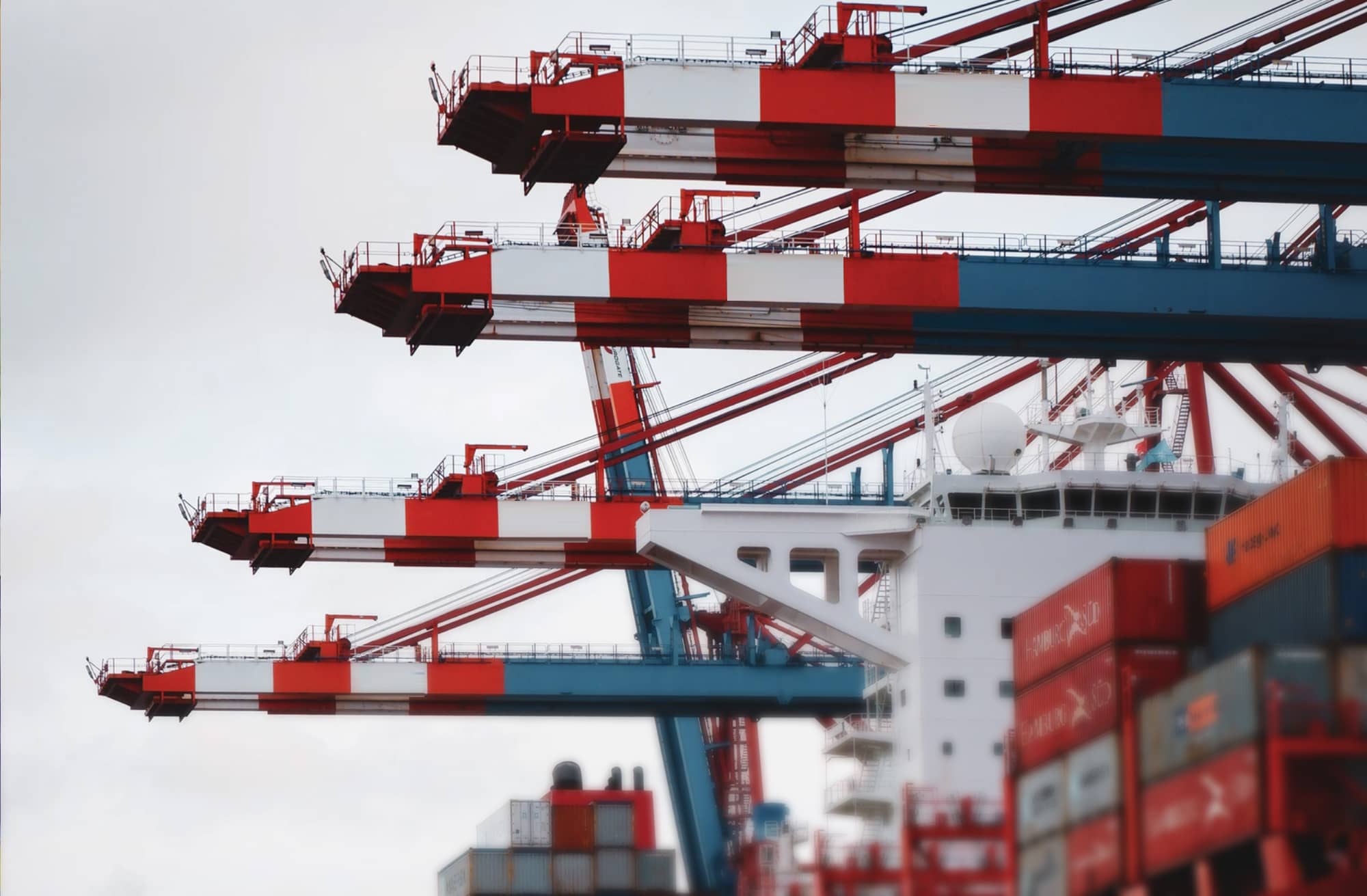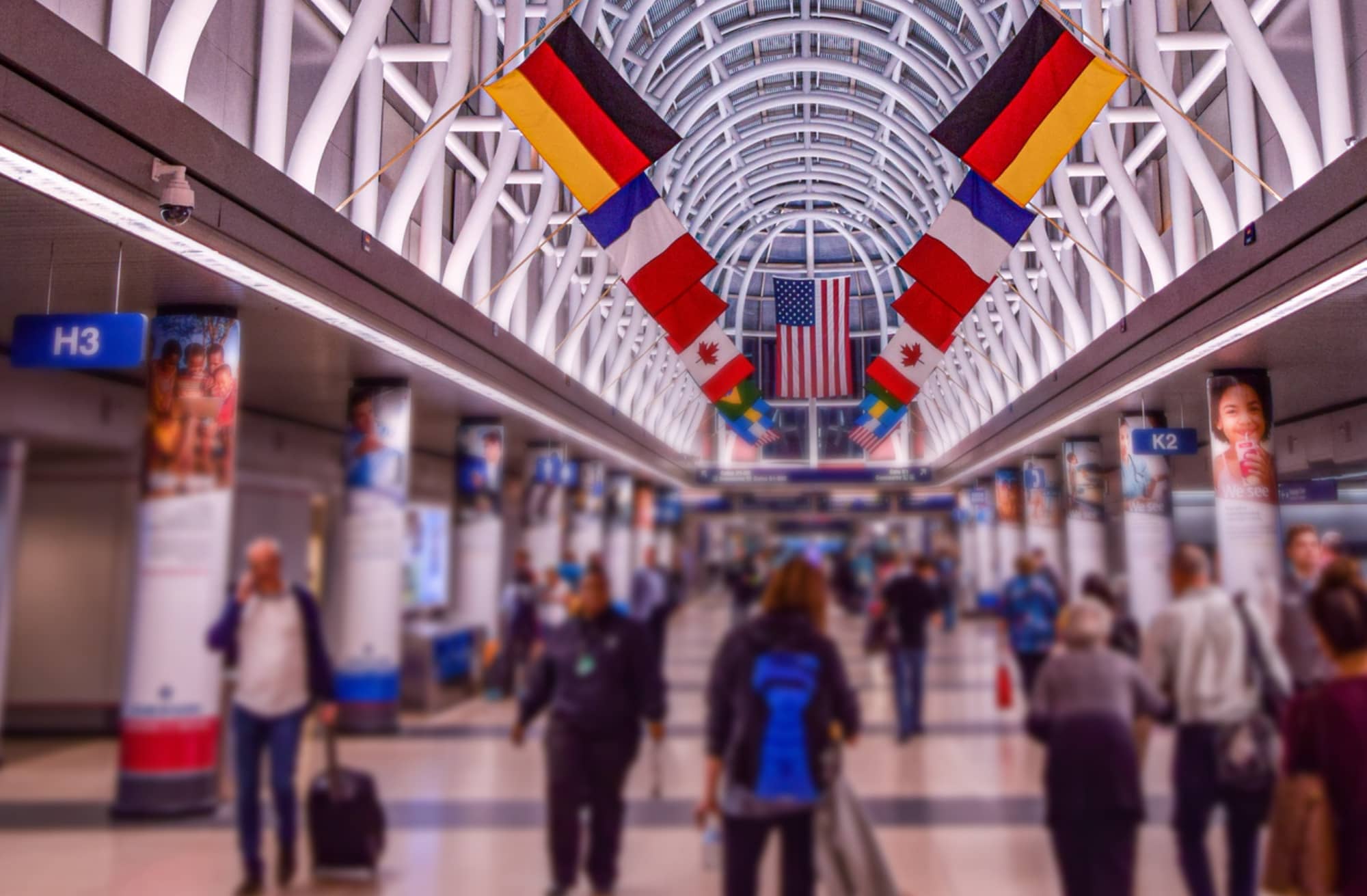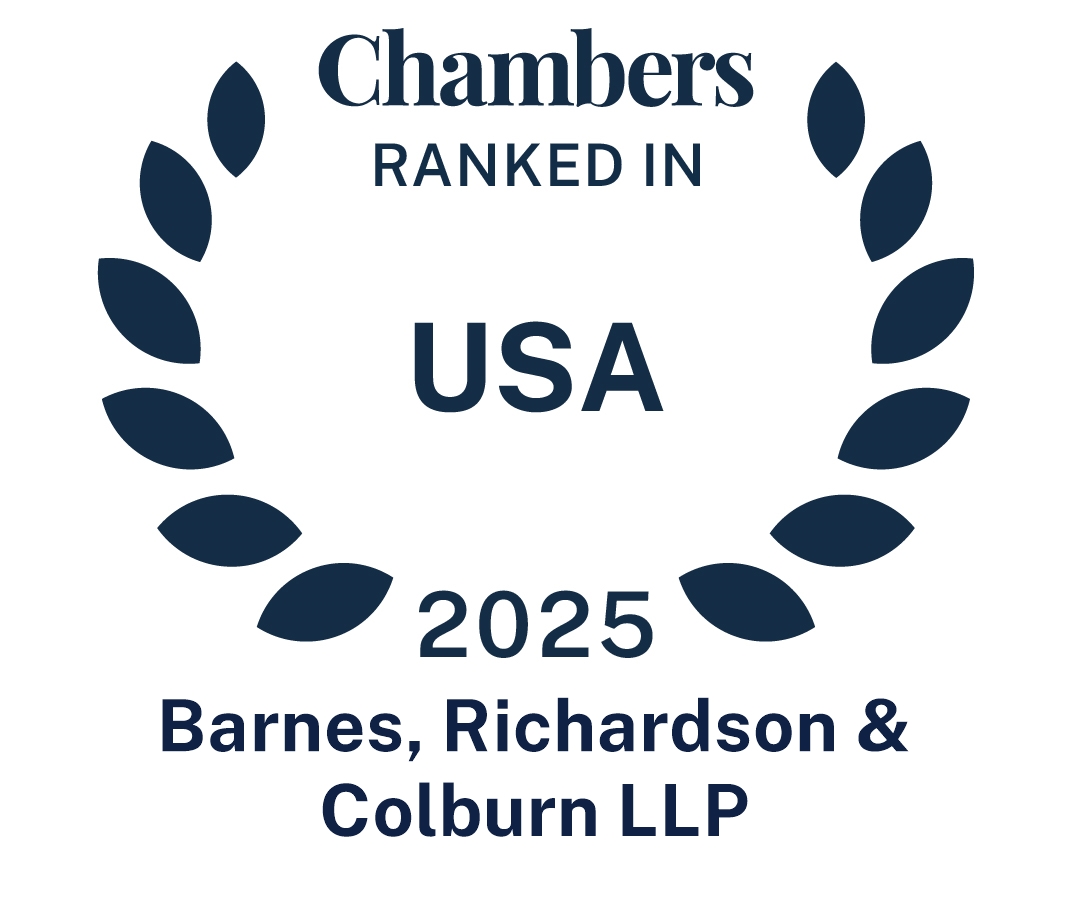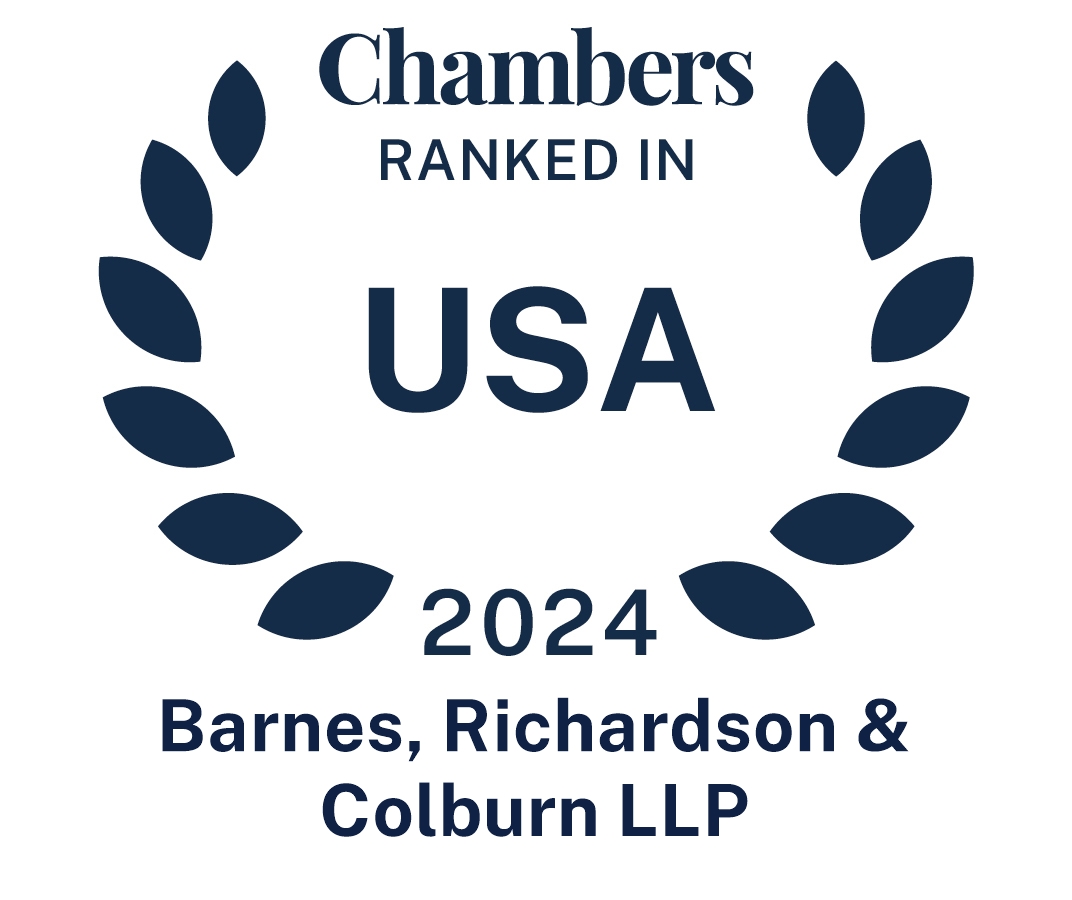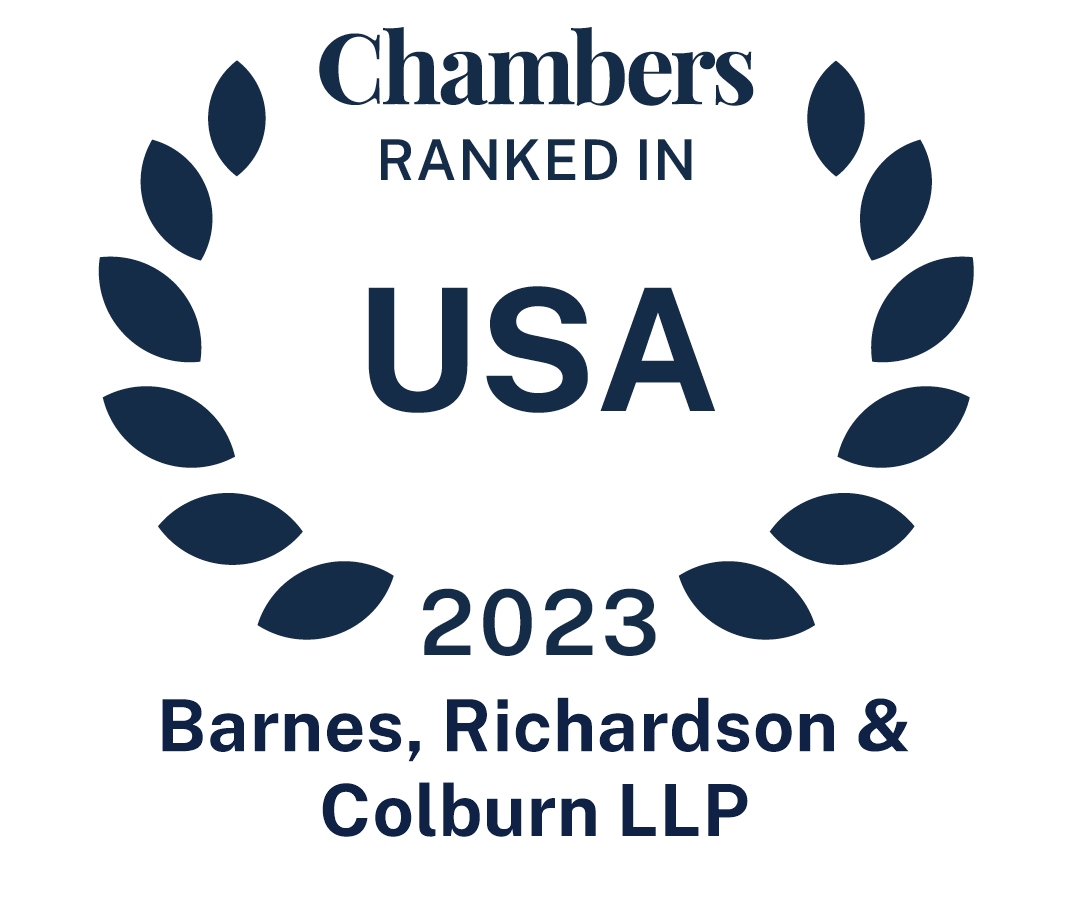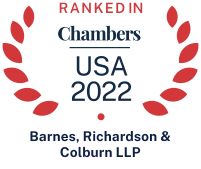Practice Areas
Classification
Proper tariff classification requires a detailed legal analysis and thorough knowledge of the international Harmonized Tariff System (HTS) In the U.S., knowledge of the HTSUS, Customs rulings and practices, as well as court decisions is essential to effective and practical strategies. Barnes/Richardson draws on more than ten decades of experience in classification to identify the classification resulting in the lowest legally correct rate.
Valuation
Importers must ensure that the correct method of valuation is applied to their merchandise and that all required elements are included in the value reported to the customs authorities. Barnes/Richardson brings to bear unparalleled expertise on issues of valuation including working with importers to implement systems to identify and report assists (e.g., tooling and engineering expenses), establishing first sale for entry, and defending valuation in audits.
Customs Legal Compliance Programs
The burden of compliance with the laws and regulations administered by the Customs and Border Protection falls upon importers who must discharge this responsibility with reasonable care. That means establishing practical business systems and procedures that ensure importers meet Customs expectations of informed compliance. Barnes/Richardson designs and assists in the implementation of legal compliance programs specifically tailored to the needs of individual clients, including internal compliance reviews, the preparation of comprehensive manuals, training and other services designed to ensure and document the exercise of reasonable care. More below . . . .
Trade Agreements and Duty Reduction
Successive rounds of GATT/WTO negotiations and free trade agreement negotiations such as those leading to the USMCA have presented opportunities for those importers and domestic industries that are alert to the developments in these negotiations and that present their views effectively.
The U.S.-Mexico-Canada Free Trade Agreement, other similar agreements and programs such as the Generalized System of Preferences, AGOA, and duty drawback give importers opportunities to reduce the duties and fees owed on shipments to the United States and have created new avenues for U.S.-based importers to take advantage of economic opportunities for suppliers and factories in worldwide. We provide expert support in developing duty-reduction programs, including the completion of Certificates of Origin and the development of systems for communicating technically detailed FTA requirements to suppliers and customers. We also help with FTA verifications, GSP audits, the operation of Foreign Trade Zones, duty drawback, and other duty reduction opportunities.
Investigation & Audits
Formal investigations conducted by U.S. Customs and Border Protection, Immigration and Customs Enforcement, or other enforcement agencies and audits conducted by Customs can result in significant additional duty liability and the assessment of substantial penalties. Barnes/Richardson provides guidance and representation throughout the course of investigations and audits seeking to eliminate exposure to additional duty or penalty liability. More below . . . .
Cargo Security
The security of your supply chain is an important area of focus for Customs & Border Protection. To avoid delays in the release of merchandise as well as to gain access to benefits from Customs, importers may wish to participate in the Customs-Trade Partnership Against Terrorism, or C-TPAT. Barnes/Richardson lawyers help importers and foreign manufacturers apply for and retain C-TPAT membership from the implementation and application process through to, if necessary, responding to security incidents.
Binational Panel Reviews
The USMCA and its predecessor, the NAFTA, established unique dispute resolution procedures for international trade disputes in which the parties present their cases to a panel of decision-makers made up of both foreign and U.S. nationals. Barnes/Richardson lawyers pioneered the conduct of NAFTA binational panel reviews and can represented interested parties before USMCA panels.
[Read more]
U.S. Customs and Border Protection routinely uses two different types of importer audits, the Focused Assessment (“FA”) and the Quick Response Audit (“QRA”).
Focused Assessments
In a FA Customs employs a risk-based approach to assessing an importer’s compliance with customs laws and regulations. The FA starts with a review of an importer’s internal controls and procedures to determine the likelihood of non-compliance. Importers that represent an an unacceptable risk may be subject to a more comprehensive audit, a Compliance Improvement Plan, and follow up audits. Any large importer can anticipate being selected for a FA, as Customs tries to review all large importers every few years.
Quick Response Audits
A QRA is a single-issue audit and is often the result of a referral to Customs Regulatory Audit from an Import Specialist or other Customs official that suspects an importer has a non-compliance issue that requires further evaluation.
Full Audits
When Customs perceives that there has been a specific violation or general lack of compliance, it can also commence a general audit of the importer. These audits can be very lengthy, detailed, and administratively expensive. Thus, continual attention to compliance is important.
Barnes/Richardson has helped numerous clients throughout the entire audit process. For example, after the initial selection and contact from Customs, Barnes/Richardson can conduct a pre-audit compliance review to identify non-compliance issues for possible prior disclosure. At the conclusion of the audit, Barnes/Richardson can contest and/or file comments on the audit report findings. An importer’s accounting records play an integral role during a Customs audit. Barnes/Richardson is particularly suited to provide representation during a Customs audit as our firm includes a licensed Customs broker and a former certified public accountant. From start to finish, Barnes/Richardson can help.
[Read more]
Importers are legally required to use “reasonable care” in their importing activities. Practically speaking, this requires that importers commit significant resources and take steps to ensure that they have trained employees who can interpret the legal requirements applicable to the company’s imports. Maintaining appropriate training and compliance is a continuous business process.
Many companies understand that it is important to ensure that tariff classifications are accurate, all elements of value are properly reported, country of origin is properly determined and reported, and claims for special programs like the US-Mexico-Canada Free Trade Agreement (“USMCA”) or Generalized System of Preferences (“GSP”) are supported. Most companies also understand that they are required to keep documents to support their claims in these (and perhaps other) areas. Despite their best efforts, these companies sometimes require assistance to design, document, and defend their business processes.
The attorneys at Barnes, Richardson & Colburn have substantial experience in conducting compliance audits and implementing customs compliance programs. Our audits are focused and designed to minimize business disruption. We design compliance programs meant to provide the highest level of compliance and reliability while respecting the company’s current processes. We regard these programs as being the best practical solution to continuing to do business while ensuring the required level of Customs compliance.
Contact any attorney at Barnes, Richardson & Colburn to explore whether you are complying with the Customs laws, and how to maximize your compliance with practical, business-oriented practices and procedures.
[Read more]
The Consumer Product Safety Commission (CPSC) is charged with protecting the public from the risk of injury or death associated with the use of consumer products. In particular, CPSC works to protect consumers from products that pose a fire, electrical, chemical, or mechanical hazards. CPSC’s Compliance Investigators, also known as the “Toy Police,” work closely with Customs and Border Protection (CBP) officers at ports to identify and examine imported consumer products.
If CPSC determines that an imported product is unsafe and violates an applicable statute, CPSC may issue a Letter of Advice (LOA) that identifies the statute and the compliance failure. CPSC may also recommend that CBP seize the products or take other appropriate actions. However, sometimes these LOA and CBP seizures are based on erroneous information or other inaccuracies. In these cases, the experienced attorneys at Barnes Richardson can work with the importer to gather and present evidence of compliance to the CPSC and seek the release of seized property from CBP.
[Read more]
Importers face a dizzying array of laws that have the potential to dramatically increase the cost of importing into the United States. These include antidumping duty (AD) cases, countervailing duty (CVD) cases, circumvention actions under the Enforce and Protect Act of 2015 (EAPA), Section 201 actions, Section 232 actions, and Section 301 actions. Each of these laws adds risk to your international supply chain.
Antidumping and countervailing duties are additional duties assessed against specific articles from specific countries. Antidumping duties are intended to “level the playing field” between unfairly priced imports and similar goods manufactured in the United States. Countervailing duties are intended to “level the playing field” between unfairly subsidized imports and similar goods manufactured in the United States. Importers need to know whether their product is described in an AD or CVD order, and whether the country of origin of their product is one subject to an AD or CVD order. Barnes, Richardson & Colburn attorneys are experts in helping you establish whether the goods are in scope and the country of origin. We are also expert in helping you mitigate your risk if your goods are subject to AD/CVD orders.
The Enforce and Protect Act of 2015 allowed Customs to investigate allegations that goods are imported into the United States without paying AD/CVD duties that are due. In the law this is called circumvention. EAPA investigations can lead to very significant AD/CVD bills for importers. EAPA investigations also move very quickly. Barnes, Richardson & Colburn attorneys can help you respond quickly and properly to an EAPA investigation to ensure the company puts forth the best defense possible.
Section 201 actions are called Safeguard Duties and are intended to give relief to domestic manufacturers seriously injured by increased imports of goods from abroad. Section 232 actions are invoked when the national security of the United States is endangered by imports. Section 301 is invoked when the United States is not getting the full benefit of its international trade agreements. Barnes, Richardson & Colburn attorneys can assist you in navigating imposition of these duties, seeking exclusions (when applicable), or otherwise managing the impact of these duties on your supply chain.
[Read more]
Antidumping law is extremely complex and practice in the area is changing constantly, the summary below provides a quick reference to the main issues. Because we have one of the largest trade remedies’ practices in the United States, we would be glad to answer any specific questions that you may have on these issues. Contact any Barnes/Richardson lawyer for further information.
-
How Cases Begin – Cases may be filed by a U.S. industry that can show that (a) prices of imports are unfairly low; and (b) the U.S. industry is being injured by these unfairly priced imports.
-
Deadlines – Cases have very strict and fast deadlines. The first hearing is 3 weeks after the filing of a petition. Final determinations are made within one year. Interim relief is generally granted within 160 days of the initial filing.
-
Agencies involved – Cases are heard at the U.S. Department of Commerce (regarding the level of dumping) and the U.S. International Trade Commission (regarding whether injury exists).
-
Type of Relief – Relief is in the form of additional duties.
U.S. producers which are faced with low prices (often from Vietnam or China) like these cases since a successful case will effectively put a floor on prices.
-
Risks to Importers – Importers operating under a dumping order need to be very cautious since the dumping duty rates may change and the scope of the order may be modified.
-
What Is Dumping? – 2 main elements to dumping case: (1) Sales in the US at below “normal value” and (2) material injury or threat of such injury by reason of the dumped imports.
-
What is “Normal Value”? – “Normal value” is defined, in order of preference as:
-
Home market prices,
-
Third country prices if insufficient home market sales,
-
A “constructed value” based on costs of manufacture plus SG&A expenses and “normal” profit, if insufficient home market and third country sales,
-
Special rule for non-market economies such as China and Vietnam, based on actual inputs and “surrogate values” for those inputs. Surrogate values from India, the Philippines or similar countries.
-
What Dumping Is Not – Not simply underselling United States manufacturers. Not “illegal” or necessarily “wrong.” Similarly, antidumping duties are not supposed to be a “punishment” but to offset the amount of the “dumping.”
-
Retroactive Assessment – Importers deposit duties based on the last completed calculation of rates, but these are only estimates and not final rates. Once each year a review will be conducted for the prior year’s sales to determine what the antidumping duty margin is for entries during that year.
For example, a company might deposit 10% dumping duties for January-December 2011. In January 2012 DOC begins to review those 2011 sales (review proceeding takes about one year). When a review is completed the actual duties are determined, which can be greater or less than the 10%. Importer gets refund or pays additional duties.
The key point for exporter and importers is to plan ahead. Once the sales are made, it is too late to do as much to affect the outcome. Careful planning is needed before the sales are made, and before the review occurs.
One effect of the review is the payment of the duties for the past period (so-called retrospective assessment). The other effect of the review is that the new rate will be applied as the new estimate of dumping until the next completed review
-
ITC Injury Determination – Even if the Commerce Department finds dumping, the dumping duty order will not go into effect unless the ITC also finds that the domestic industry is injured by reason of the dumped imports.
The essential argument of importers and exporters at the ITC usually is that U.S. industry is not being harmed (or threatened), usually because of a lack of any causal connection between the imports and the condition of the U.S. industry . The substantive argument often is based on an alleged lack of linkage between dumped imports and condition of the US industry, differences in product segments leading to no real competition, other causes of the problems of the industry. Procedural steps include filing a notice of appearance, completing questionnaires, participating in staff conferences, and filing briefs with legal/factual arguments.
-
Non-Reimbursement of dumping duties – Exporter/manufacturer may not simply reimburse importer for antidumping duties. If they do, Customs is to collect the dumping duties again. The idea is that antidumping duties will have economic impact in United States market and the duties are not to be absorbed by the exporter/manufacturer.
-
The Administrative Review Process – This process only occurs at the Commerce Department only. The retrospective assessment system in the U.S. means that the final liability for antidumping duties are determined only after the opportunity for a review. A review establishes the actual liability an importer must bear , which leads to a lack of predictability, particularly with non-market economies such as China and Vietnam. The usual time frame for a review is 16-17 months.
Importers may request reviews for their own imported goods. Either domestic parties or foreign manufacturer may request a review for a foreign company. If a company is to request a review itself, it should prepare in advance and know the risks of such a review, because the dumping duties paid as a result of the review could be lower, or higher, than the amounts deposited initially.
-
Scope Issues – Only “subject goods” are those that are described in the order.
Sometimes it is possible to “clarify” the order to have imports excluded from the case. If this is done, then the imports are simply not subject to the order. DOC conducts scope reviews.
Any interested party may request (including an importer). There is a two tier review process, depending on the case: (1) DOC decides whether the good is clearly outside of scope on face of scope, and (2) if not, then Commerce conducts a further inquiry.
In further inquiry cases, Commerce often examines 5 factors to assist it in determining if a product is in or out of the scope of the order.
The 5 factors are:
-
(a) Physical characteristics of the product
-
(b) Expectation of ultimate consumers
-
(c) Ultimate use of product
-
(d) Channels of trade of product, and
-
(e) Manner of advertising and display
Because BRC is experienced in both customs law and antidumping practice, it is in a strong position to help clients navigate the complex issues that arise in the scope context.
-
New Shipper Reviews – Subject exporters/manufacturers who have not been reviewed pay “all others” rate. The “all others rate” generally is very high. The new shipper companies are able to be reviewed and obtain their own rate for their shipments, which should be substantially lower. There are special rules for such reviews, which include the ability to ask for reviews twice a year rather than only annually.
-
Other Issues – Other issues that arise in dumping cases that we frequently work on include five year “sunset” reviews determining whether there still would be injury to the U.S. industry if the dumping order were lifted.
-
Circumvention Issues – Circumvention of dumping duties can have administrative effects under the dumping law, as well as penalties from U.S. Customs & Border Protection, and even criminal liability in certain instances. Circumvention issues regarding dumping order (particularly with regard to Chinese goods) have become increasingly common in recent years. BRC’s expertise with regard to both CBP and the Commerce Department puts us in the position to work through all aspects of the problem for clients and attain a just result.
[Read more]
While the law is extremely complex and practice in the area is changing constantly, the summary below provides a quick reference to the main issues. Because we have one of the largest trade remedies’ practices in the United States, we would be glad to answer any specific questions that you may have on these issues. Call Jeff Neeley or Matt McGrath in the Washington, D.C. office at 202-483-0070 for further information.
1. How Cases Begin—Cases may be filed by a U.S. industry that can show that (a) imports are subsidized; and (b) the U.S. industry is being injured by these subsidized imports.
2. Deadlines—Cases have very strict and fast deadlines. The first hearing is three weeks after the filing of a petition. Final determinations are made within one year. Interim relief is generally granted within 160 days of the initial filing.
3. Agencies involved—Cases are heard at the U.S. Department of Commerce (regarding the level of subsidies) and the U.S. International Trade Commission (regarding whether injury exists).
4. Type of Relief—Relief is in the form of additional duties. U.S. producers that are faced with subsidized imports like these cases because a successful case will effectively offset such subsidies.
5. Risks to Importers—Importers operating under a subsidy order need to be very cautious because the subsidy rates may change and the scope of the order may be modified.
6. What Is A Subsidy?—Subsidies may be such things as export subsidies, special tax zones for exporters, government loans at below market rates, preferential tax benefits for exporters, preferential tax benefits for certain industries, equity infusions in non-equity worthy companies.
7. Retroactive Assessment—Importers deposit duties based on the last completed calculation of rates, but these are only estimates and not final rates. Once each year a review will be conducted for the prior year’s sales to determine what the subsidy margin is for entries during that year.
For example, a company might deposit 10% subsidy duties for January-December 2011. In January 2012, the DOC begins to review those 2011 sales (review proceeding takes about one year). When a review is completed the actual duties are determined, which can be greater or less than the 10%. Importer gets refund or pays additional duties.
8. ITC Injury Determination—Even if the Commerce Department finds subsidies, the CVD order will not go into effect unless the ITC also finds that the domestic industry is injured by reason of the subsidized imports.
The essential argument of importers and exporters at the ITC usually is that U.S. industry is not being harmed (or threatened), usually because of a lack of any causal connection between the imports and the condition of the U.S. industry. The substantive argument often is based on an alleged lack of linkage between subsidized imports and condition of the US industry, differences in product segments leading to no real competition, other causes of the problems of the industry. Procedural steps include filing a notice of appearance, completing questionnaires, participating in staff conferences, and filing briefs with legal/factual arguments.
9. The Administrative Review Process—This process only occurs at the Commerce Department. The retrospective assessment system in the U.S. means that the final liability for subsidies is determined only after the opportunity for a review. The usual time frame for a review is 16-17 months.
Importers may request reviews for their own imported goods. Either domestic parties or foreign manufacturer may request a review for a foreign company. If a company is to request a review itself, it should prepare in advance and know the risks of such a review, because the CVD paid as a result of the review could be lower, or higher, than the amounts deposited initially.
10. Scope Issues—Only “subject goods” are those that are described in the order.
Sometimes it is possible to “clarify” the order to have imports excluded from the case. If this is done, then the imports are simply not subject to the order.
DOC conducts scope reviews. Any interested party (including an importer) may request a clarification. There is a two tier review process, depending on the case: (1) DOC decides whether the good is clearly outside of scope on face of the order, and (2) if not, then Commerce conducts a further inquiry.
In further inquiry cases, Commerce often examines five factors to assist it in determining if a product is in or out of the scope of the order. The factors are:
- Physical characteristics of the product
- Expectation of ultimate consumers
- Ultimate use of product
- Channels of trade of product, and
- Manner of advertising and display
Because BRC is experienced in both customs law and antidumping/CVD practice, it is in a strong position to help clients navigate the complex issues that arise in the scope context.
11. Other Issues—Other issues that arise in CVD cases, which we frequently address, include five year “sunset” reviews determining whether there still would be injury to the U.S. industry if the CVD order were lifted,
12. Circumvention Issues—Circumvention of CVD orders can have administrative effects under the CVD law, as well as penalties from U.S. Customs & Border Protection, and even criminal liability in certain instances. Circumvention issues regarding the CVD order (particularly with regard to Chinese goods) have become increasingly common in recent years. BRC’s expertise with regard to both CBP and the Commerce Department puts us in the position to work through all aspects of the problem for clients and attain a just result.
[Read more]
Companies can design their international supply chain to reduce customs duties and other expenses by sourcing goods originating in a Free Trade Area. The United States has trade agreements ranging from the US-Mexico-Canada Free Trade Agreement ("USMCA") and the U.S.-Central America-Dominican Republic FTA ("CAFTA-DR") to bilateral agreements with South Korea, Australia, Chile, Singapore, Jordan, Israel, Moroco, Bahrain and other countries. Companies exporting to customers who may be seeking to claim preferences under these agreements must establish compliance systems to gather the necessary information and document the origin of their products. Similarly, importers need to have the required documentation or knowledge to support a claim for duty-free entry.
Barnes/Richardson lawyers have helped many companies establish and defend compliance systems for FTAs. This experience includes very complex programs including automotive rules of origin, averaging, fungible materials, and other details of the rules of origin. We have also worked with companies undergoing governmental verifications of the status of their goods.
[Read more]
Compliance
Barnes/Richardson provides practical and effective to help clients development and implementation Export Management Systems. An EMS allows traders to transfer products and information across borders confident that they are in compliance with the law regarding exports, re-exports and deemed exports. We examine process flows to eliminate complexity and waste, strengthen knowledge and management decision-making in day-to-day operations, and conduct internal staff training to assist in maintaining complex compliance initiatives once the Export Management System is in place.
Licensing
Whether the jurisdiction for a particular transaction is properly with the Bureau of Export Administration of the Commerce Department, the State Department, or the Office of Foreign Assets Control of the Treasury Department, Barnes/Richardson can quickly and effectively analyze proposed transactions and apply the laws and regulations to determine whether a license is required. If so, we can present the matter to the agency concerned in such a way that the license is granted as quickly and efficiently as possible. In addition, Barnes/Richardson will advise on the scope of the license and the proper application of the license so that the exporter is clear as to its privileges and responsibilities.
Investigations and Enforcement
Barnes/Richardson is prepared to assist should the client receive a summons, subpoena or otherwise be the subject of a civil or criminal investigation. Such investigations are becoming more common and an ever more important tool of the government to ensure export compliance. At such times, expert and experienced counsel is essential. Barnes/Richardson fills that role.
[Read more]
The United States, regulates the export, reexport, and in-country transfers of items, software, and technology that are considered “dual-use.” Dual-use items are items that have both commercial and military or “proliferation” applications. Proliferation refers to the spread or growth of weapons of mass destruction. Exports of these dual-use items are governed by the Export Administration Regulations (EAR) administered by the Bureau of Industry and Security (BIS), part of the Department of Commerce.
Because the scope of the EAR is wide, commercial items that have no obvious military use may be governed by the EAR. This does not mean that export of the item is forbidden. It means that to export the item or share technology with a foreign national, a license might be needed. Whether a license is required depends both upon the product and the destination country. It can also depend on the intended end use or end user.
In addition to exports, the EAR regulates “reexports,” a shipment between two foreign countries of items that originated in the U.S. and restricts the transfer of controlled technology to foreign nationals (a so-called “deemed export”). Technology is “deemed exported” when “it is available to foreign nationals for visual inspection (such as reading technical specifications, plans, blueprints, etc.); when technology is exchanged orally; or when technology is made available by practice or application under the guidance of persons with knowledge of the technology.”
Attorneys at Barnes, Richardson have hands-on experience fashioning export compliance programs to deal with EAR and BIS compliance. Whether it be counseling on issues involving a deemed export or assisting a client procure a BIS license, our lawyers understand the complexity of the EAR and can provide guidance to companies looking for help meeting their export regulatory requirements.
[Read more]
Defense-related articles and services are subject to special export controls contained in the Arms Export Control Act, and its implementing regulations, the International Traffic in Arms Regulations (ITAR). ITAR contains the United States Munitions List (USML), which defines defense articles and or services. While it contains many different types of items, from guns to nuclear weapons to toxicological agents, the USML is constantly evolving. If you are not sure that the article you are exporting qualifies as a defense article, you can submit a Commodity Jurisdiction Request (CJR) and DDTC will tell you.
All U.S. manufacturers, exporters, and brokers of defense articles, defense services, or related technical data, as defined on the USML, are required to register with U.S. Department of State, which has jurisdiction over defense exports. The sub-agency within the Department of State which deals with defense-related export is known as the Directorate of Defense Trade Controls (DDTC). Registration does not confer any export rights or privileges but provides the Department of State with information and is a precondition for the issuance of any license or other approval for export.
One of the most significant issues for ITAR compliance is what is sometimes referred to as a “deemed export”, i.e., an export taking place by the transfer of defense information to a foreign national. Thus, merely showing or describing controlled technology to a foreign national is an export under the ITAR. The Department of State takes these “deemed exports” very seriously and there have been some high-profile prosecutions of academic personnel in recent years for sharing information with foreign students without proper authorization from DDTC.
There are several types of export authorization. The most typical is a DSP-5 (Department of State Publication No. 5), export license which authorizes the temporary or permanent export of defense articles and/or technical data to a foreign person (but not technical assistance or defense services). During the review process, DDTC will screen all parties to the proposed transaction against a watch list of known or suspected export violators, and a hit on this list will mean a full compliance review before any license will be issued. In about 30% of cases, DDTC will also refer applications to other agencies such as the Department of Defense for their comments and recommendations.
Because any license granted is conditional upon the purported end-user and end-use, DDTC will perform end-use checks on exports after they have been delivered to the foreign end user. Therefore, the responsibility of a U.S. exporter does not end at export; rather the exporter should be taking steps to ensure that the articles arrive at the licensed end-user rather than being diverted.
The Department of State has the option of asking the Department of Justice to prosecute criminally requesting fines and/or imprisonment or going for civil penalties of up to $500,000 per violation. As part of the enforcement process, DDTC may impose a mandatory compliance improvement program requiring the exporter to spend funds on compliance measures and may also require the party to submit to external audit. In serious cases, a party may be debarred from future exporting for a period of time.
Attorneys at Barnes, Richardson are experienced in dealing with ITAR issues. Whether you need counseling on dealing with a deemed export that may already have taken place, procuring a DSP-5 license, or creating a compliance program, our lawyers understand the complexity of the ITAR and can provide guidance to companies looking for help meeting their export regulatory requirements.
[Read more]
The Department of Treasury’s Office of Foreign Asset Controls (“OFAC”) administers financial and economic sanctions against specific countries in response to some form of wrongdoing. OFAC sanctions are targeted broadly against 1) foreign governments and political entities, 2) individuals and groups ranging from terrorists and drug cartels to banks and other financial institutes that support those types of activities, 3) entities such as charities linked to terrorism, and 4) certain activities such as those that would lead to nuclear proliferation or otherwise violation U.S. policy interests.
Well-known sanctions programs include complete embargoes or more limited restrictions on trade with Cuba, Iran, Syria, and North Korea. Other programs include more targeted sanctions on the property of specified people from countries including Russia, Venezuela, Belarus, the Congo, and elsewhere. Collectively, such individuals and companies are called "Specially Designated Nationals" or "SDNs." Their assets are blocked, and U.S. persons are prohibited from dealing with them. Both the sanctions programs and the SDN List are constantly changing and companies that do business internationally, particularly in political ‘hot spots’ are well advised to constantly monitor OFAC developments.
OFAC’s sanctions apply to all U.S. citizens and permanent residents wherever they are located. It also applies to any person who is physically in the United States regardless of his citizenship. U.S. companies and all branches of U.S. organizations throughout the world remain subject to OFAC. Likewise, U.S. branches or offices (physically located in the U.S.) of foreign corporations are subject to OFAC.
Attorneys at Barnes, Richardson are well versed in sanction law and can provide guidance on how to tailor transactions, including financial transactions, so they remain complaint with the OFAC law. Barnes, Richardson attorneys assist companies in all areas of OFAC compliance, including building and auditing robust OFAC compliance programs, preparing and submitting voluntary disclosures to OFAC, and engaging in other representations before that agency.
[Read more]
Customs is charged with ensuring that United States laws and regulations administered by other agencies are applied properly to imports. There are more than 30 partner government agencies whose laws and regulations apply to imports. These include the Environmental Protection Agency (EPA), Animal and Plant Health Inspection Service (APHIS), Fish and Wildlife Service (FWS), the National Highway Traffic Safety Administration (NHTSA), and many more. It is crucial to be prepared for Partner Government Agency requirements and, when necessary, to address any compliance issues promptly and properly. Barnes, Richardson & Colburn attorneys can help you avoid Partner Government Agency problems and address them if they arise.
[Read more]
Court of International Trade and Court of Appeals for the Federal Circuit
Our clients benefit from the years of experience our attorneys have acquired handling matters at the U.S. Court of International Trade and the U.S. Court of Appeals for the Federal Circuit. Customs and trade remedy cases are technical in nature, and we are confident that our approach to litigation, backed up by our record of success over the years, is a reason our clients trust us to handle these complicated disputes for them. Afterall, Barnes/Richardson has appeared as counsel in more reported CIT opinions than any other law firm.
[Read more]
Following the tragic events of 9/11, the Bureau of Customs and Border Protection (CBP), a part of the Department of Homeland Security (DHS) that was formed in response to those events, together with other agencies in DHS, became responsible for ensuring that goods being imported into the U.S. had been secured from terrorist threats. A number of different legal requirements have been instituted, most recently the requirement that importers file an Importer Security Filing (ISF) with each entry of containerized cargo. The US has also worked with numerous port authorities around the world to enhance the security measures taken overseas before cargo whose final destination is the US is laden on a vessel. Air cargo is also subject to enhanced security requirements, including cargo handled by express couriers.
Customs-Trade Partnership Against Terrorism
However, the program that has probably had the greatest impact on importers and foreign suppliers is the Customs-Trade Partnership Against Terrorism (C-TPAT), which CBP first rolled out in 2002. While this, nominally, is still considered a "voluntary" program, market conditions, such as the requirement that C-TPAT members only deal with business partners who are either C-TPAT members or can certify that they meet C-TPAT minimum security standards, suggests that it is, for practical purposes, a requirement for all importers. Security reviews have also been made a standard part of a Customs audit for those companies who are not members of C-TPAT.
C-TPAT Application
The procedure for joining the C-TPAT program, and the conditions for maintain membership in the program are found on the CBP website. Briefly, the applicant, which may be an importer, broker, other party in the supply chain such as a carrier or consolidator, as well as certain foreign suppliers, must respond to the questions on the CBP website which address the security profile of the applicant. A Supply Chain Security Specialist (SCSS) will review the responses and if all are acceptable, will inform the applicant that they have been accepted as a member of the program. In the case of an importer the application will ask questions about the security measures that are in place at all of the locations which handle cargo destined to the U.S. such as factories, consolidators, warehouses, etc. They questions are quite specific, such as what type of physical security is present at the plant, is there a perimeter fence, what type of access controls are in place for visitors and employees, how is inventory guarded, what procedure is followed to load and seal containers, what type of security training and awareness programs are in place, what type of IT security is in place and similar questions that are all designed to allow CBP to acertain whether the facilities met so-called “minimum security requirements.” After an importer is accepted into the program, CBP will schedule a validation, i.e.., a visit to a foreign facility. If the security procedures at the facility are found to be acceptable the importer will become a certified member and be giving a rating of Tier II (meets minimum security standards) or Tier III (exceeds minimum security standards), or will fail the validation and be given an opportunity to address the changes that have been identified or be suspended from the program. Every member has to be re-validated every three of four years, depending on their status in the program.
BRC has assisted many importers in helping them prepare for the application process, assisting in filing the application and preparing companies for a successful validation. Several clients that we have helped have attained Tier III status, a ranking that is achieved by only a few hundred of the ten thousand companies who have joined so far. We have provided guidance on how to evaluate several hundred supply chains that individual companies may have and have provided clients with all the necessary tools needed to remain member in good standing in the program.
[Read more]
Customs and Border Protection is responsible for preventing merchandise that infringes U.S. copyrights, trademarks, and other intellectual property rights from entering the country. Customs is also responsible for the enforcement of exclusion ordered issued by the International Trade Commission in Section 337 cases, which generally focus on the enforcement of patent rights.
Trademark Issues
Importers of branded merchandise should be aware that the law prohibits the importation of merchandise bearing a U.S. trademark without the permission of the trademark owner. Thus, importers should be prepared to show authorization from the rights holder. Absent permission, Customs can seize the infringing goods. While Customs can seize any infringing goods, its primary focus is on the interdiction of counterfeit goods. Counterfeit goods are products that bear a mark that copies or simulates a registered trademark. Because counterfeiting is illegal activity, the counterfeited products are often of inferior quality and may pose a risk to health and safety.
Copyrights
Customs also has the power to exclude "piratical" copies of products covered by copyright such as books, music, videos, software, and video games. A piratical copy is one that is produced without the authorization of the copyright holder. Because products imported into the U.S. often include a copyrightable elements (e.g., written instructions, packaging artwork, etc.), copyrights may be a viable alternative to trademark enforcement for companies seeking to prevent the entry of "knock-off products."
Gray Market Goods
It is often possible to find desirable products on sale outside the United States at discounted prices. This creates the possibility that goods will be imported through unauthorized channels. Such goods are called "gray market" or "parallel imports." Because these are genuine products, gray market goods are admissible
provided they are not materially different from the products offered for sale in the U.S. As a result, parallel importers must be careful to recognize the differences between their imports and the products authorized for sale in the U.S. Differences such as foreign language labeling, packaging, and formulation may provide a sufficient basis for Customs to exclude the merchandise. Further, companies can seek so-called "Lever Brother Protection" from parallel imports. When granted, Lever Brother Protection requires that parallel imports be labeled as such prior to release.
Recordation
Customs and Border Protection focuses its enforcement efforts on trademarks, copyrights, and trade dress recorded via its electronic system. Recordation is a relatively simple and inexpensive step that provides significant benefits. Recordation publishes the claim for protection to Customs personnel throughout the country and alerts them to the possibility that infringing merchandise is being presented for entry. Recordation should be part of a rights holder's larger strategy of working with Customs to protect its investment in intellectual property.
Section 337
Determining whether a product infringes upon a U.S. patent is often requires the application of complex legal and technical knowledge. Because of the complexity of the issues, the enforcement of patent rights at the border is entrusted to the U.S. International Trade Commission, which has staff attorneys and Administrative Law Judges dedicated to reviewing claims made before the agency. If infringement is found, the ITC can order that the merchandise be excluded from the United States. It falls to Customs and Border Protection to enforce those orders.
Our Role
Barnes/Richardson lawyers have assisted clients with all aspects of the border enforcement of intellectual property law including:
Recording trademarks
Recording copyrights
Developing brand protection materials for training Customs personnel
Responding to CBP seizure notices
Seeking rulings from CBP to confirm compliance with 337 exclusion orders
Should you have questions or concerns regarding the importation or exclusion of merchandise subject to intellectual property protection, please contact a Barnes/Richardson lawyer.
[Read more]
The reasons for seizures or liquidated damages vary, with country of origin marking issues, suspected counterfeit goods or other IP violations, failure to redeliver merchandise, and undeclared merchandise or money common examples. Customs, however, also exercises its enforcement authority on behalf of other federal agencies, including:
- Food and Drug Administration
- Consumer Products Safety Commission
- Animal Plant Health Inspection Service
- Fish & Wildlife Service
- Environmental Protection Agency
An importer with seized merchandise or a demand for liquidated damages has certain options for remediating the seizure or mitigating potential liquidated damages. Barnes/Richardson lawyers understand these options and can implement the best strategic approach for securing the release of your property or reducing any financial exposure. We draw on our firm-wide experience dealing with CBP seizures and demands for liquidated damages and offer thoughtful and objective solutions to address the circumstances of your situation, whether it be via the administrative petition process, judicial forfeiture in the local district court or abandonment of the property.
[Read more]



